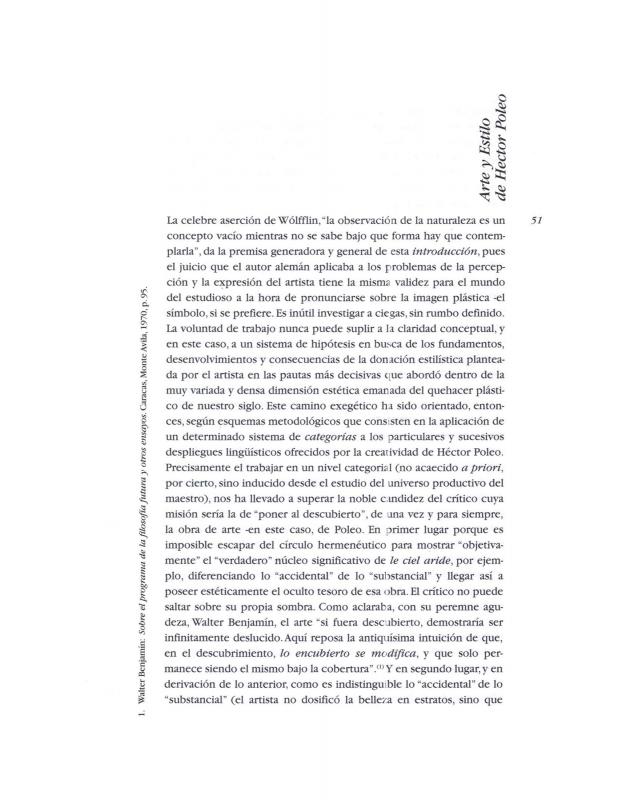This essay by journalist and critic Sergio Antillano (1922–99)—a friend of painter Héctor Poleo (1918–89) and connoisseur of his work—is one of the earliest and most complete biographical documents on the Venezuelan artist. It ventures a periodization approach of Poleo’s work that is not sufficiently insightful or grounded and, hence, fails to provide a clear vision of the artist’s evolution. By 1956, when this text was written, Poleo no longer adhered to social realism; he was in the process of concluding what some art critics and historians have called his “rational surrealist” phase (see Francisco Da Antonio, “Héctor Poleo, del realismo a lo subreal” El Universal newspaper, Cultural section, Caracas, Sunday, December 9, 1973, Year LXIV, Nº 23,165, ICAA digital archive doc. no. 1153915). At the end of the text, which has a great many illustrations, are images of works that evidence a synthesis of forms and colors, works that can be seen as part of Poleo’s somewhat geometric phase, when he produced many female faces and figures.
For other texts on Poleo’s work, see Alberto Junyent’s reviews “Aromas de la gracia” (ICAA didgital archive doc. no. 1153851) and “Obras recientes de Héctor Poleo” (doc. no. 1153835); Juan Liscano’s article “Pedro León Castro y Héctor Poleo” (doc. no. 850175); Simón Noriega’s “Fuentes concretas del surrealismo de Poleo” (doc. no. 1153819); Denys Chevalier’s essay “Poleo: la opción simbolista” (doc. no. 1162167); Alfredo Boulton’s “Introducción” (doc. no. 1153883) and “El tema de la figura humana en la obra de Héctor Poleo” (doc. no. 1153964); Bégica Rodriguez’s text “Hector Poleo, inventor y fabulador de formas” (doc. no. 1153899) written for the catalogue to the show Poleo desconocido (1997); Carlos Silva’s essay “Arte y Estilo de Héctor Poleo” (doc. no. 1172190) in his book Poleo. Categorías del espíritu; and Simón Noriega’s essays “¿Reinterpretación o Mímesis?” (doc. no. 1153792) and “Poleo y la cultura figurativa de los años cuarenta” (doc. no. 1153776) in the book La Pintura de Héctor Poleo.












